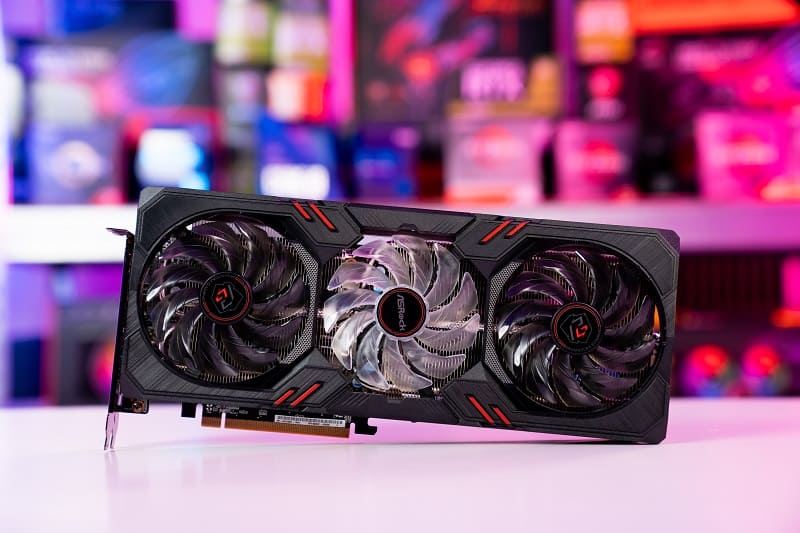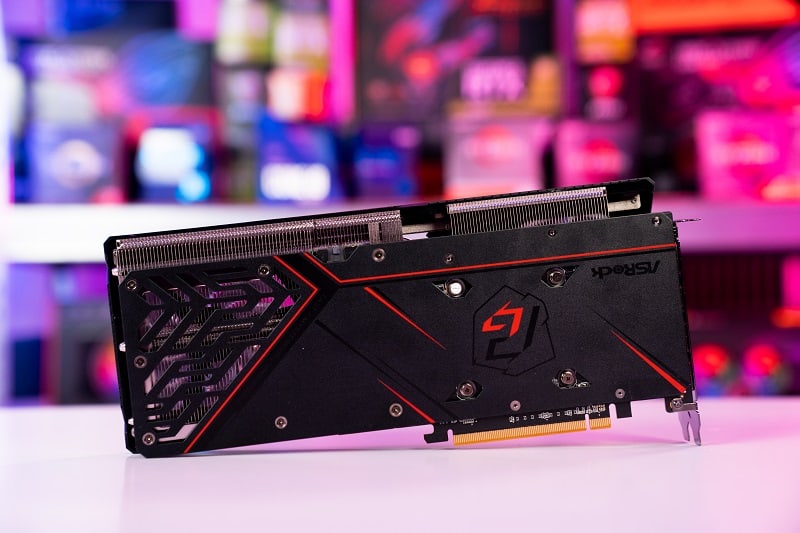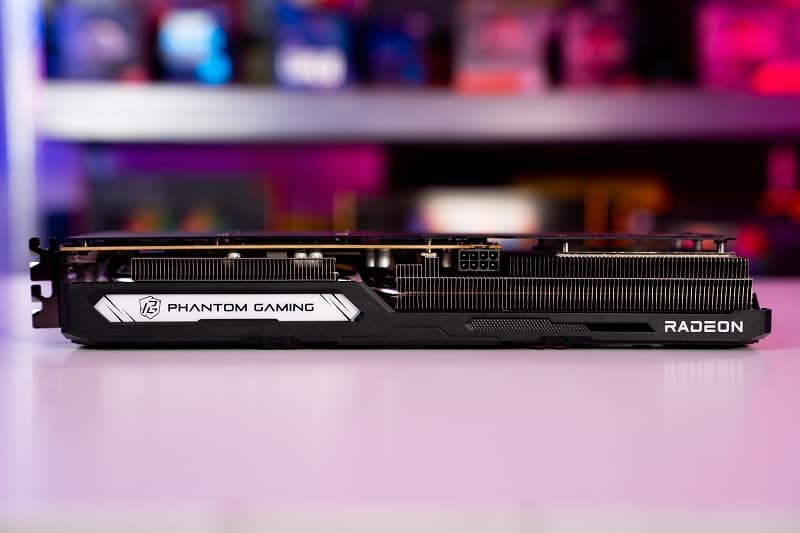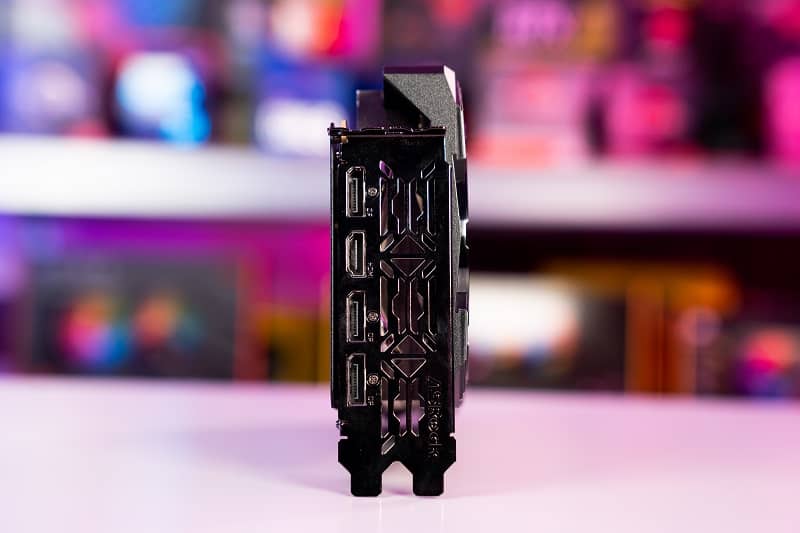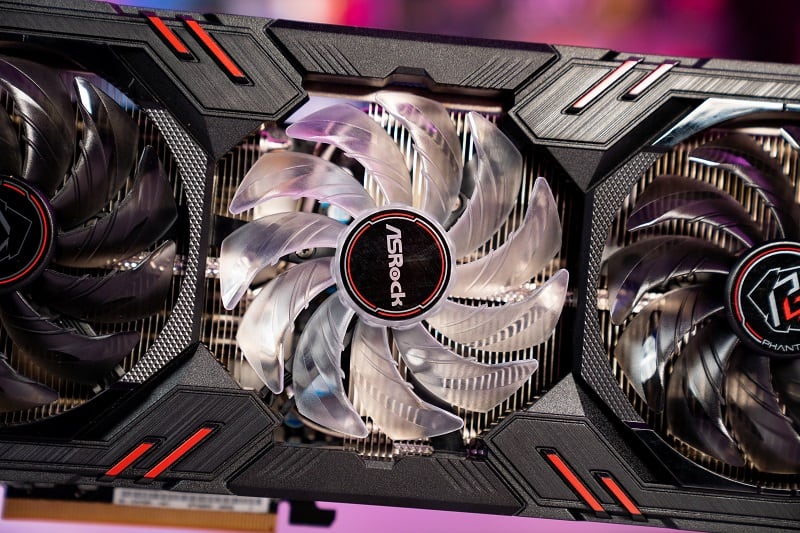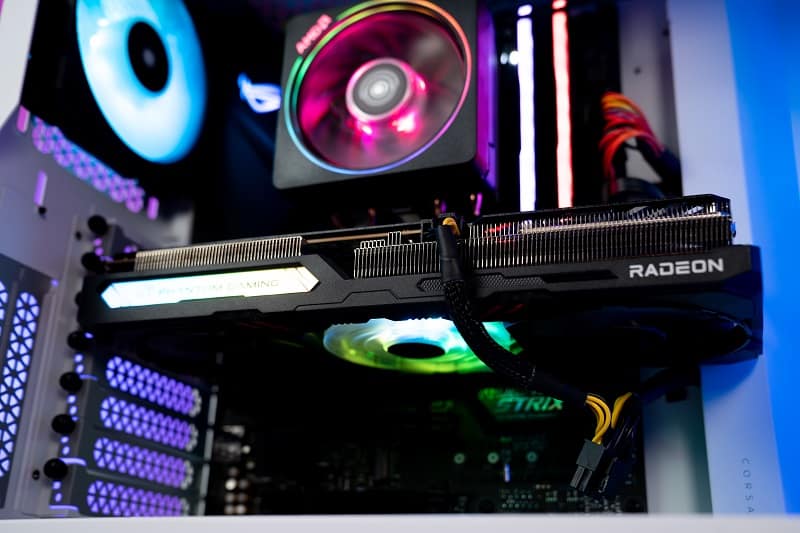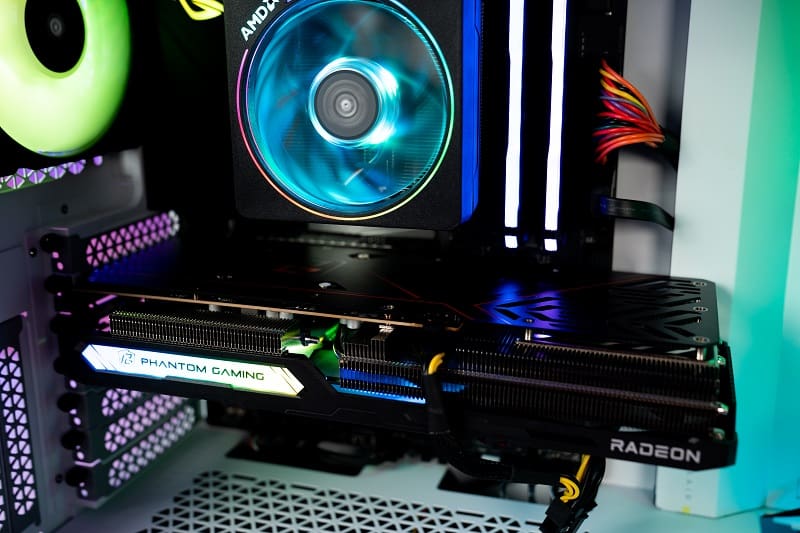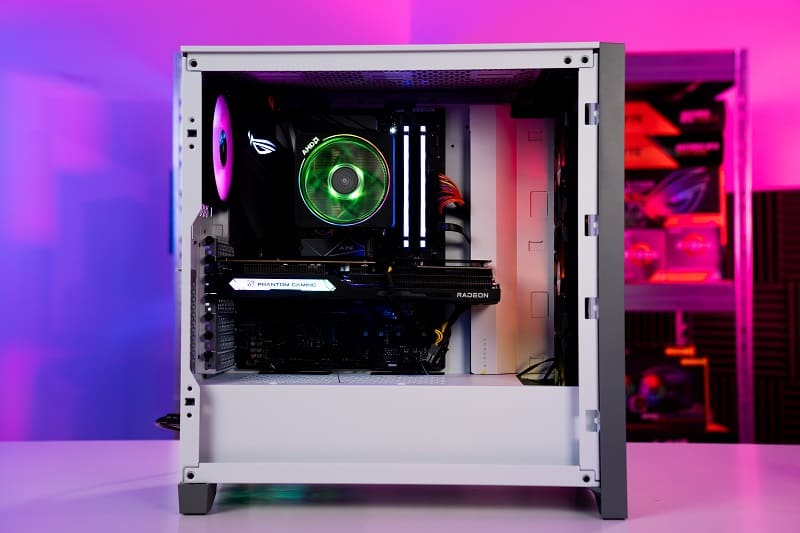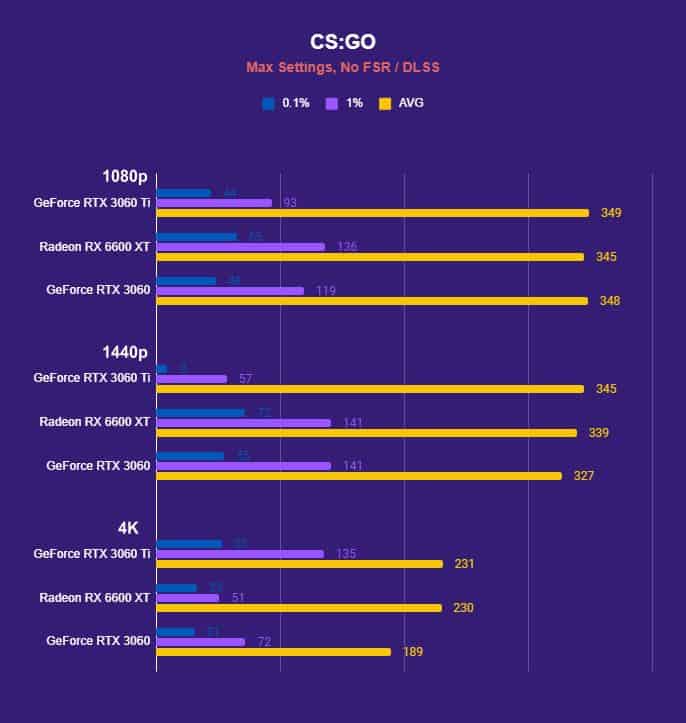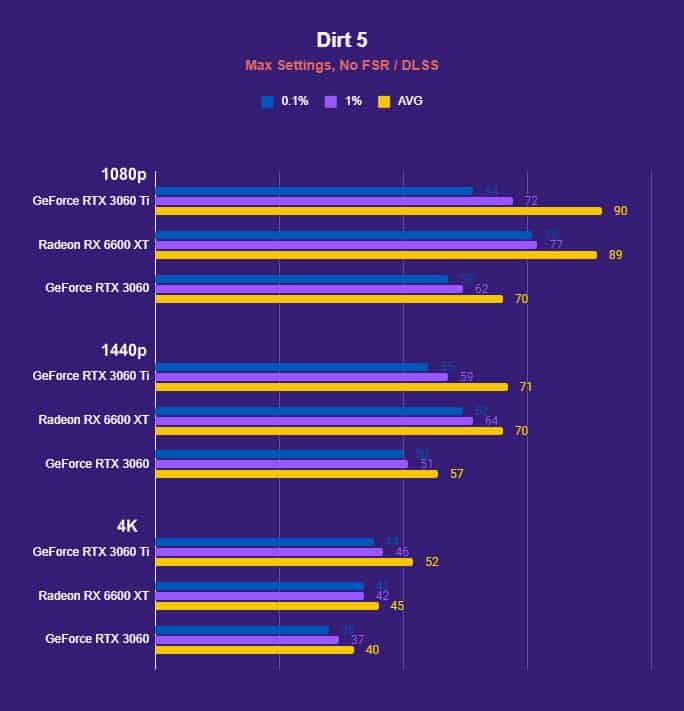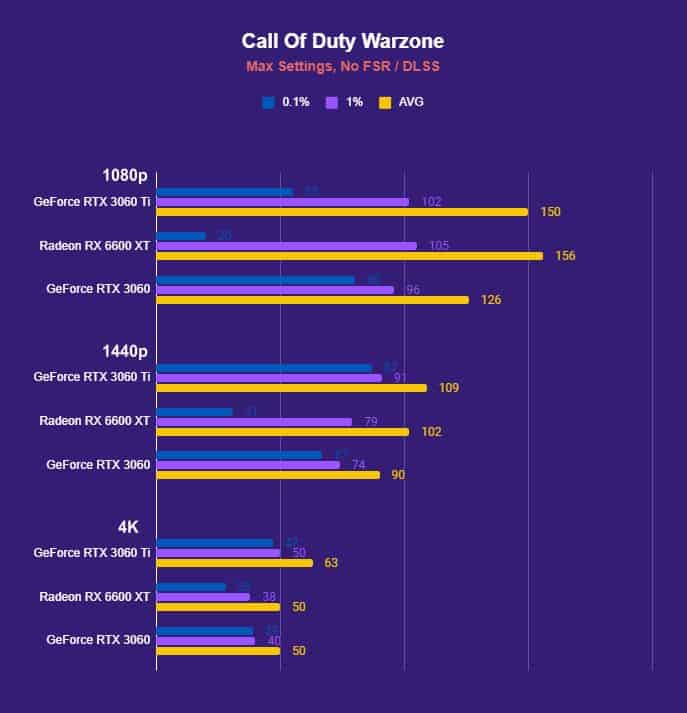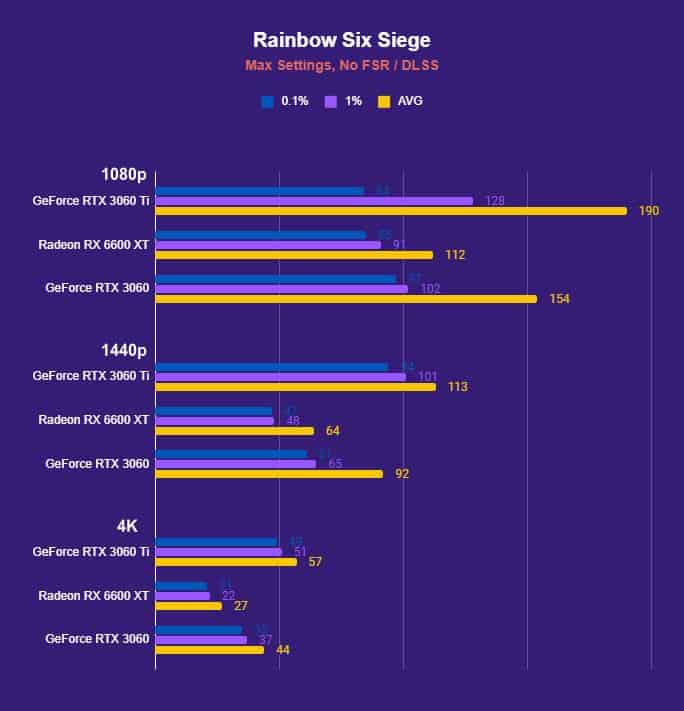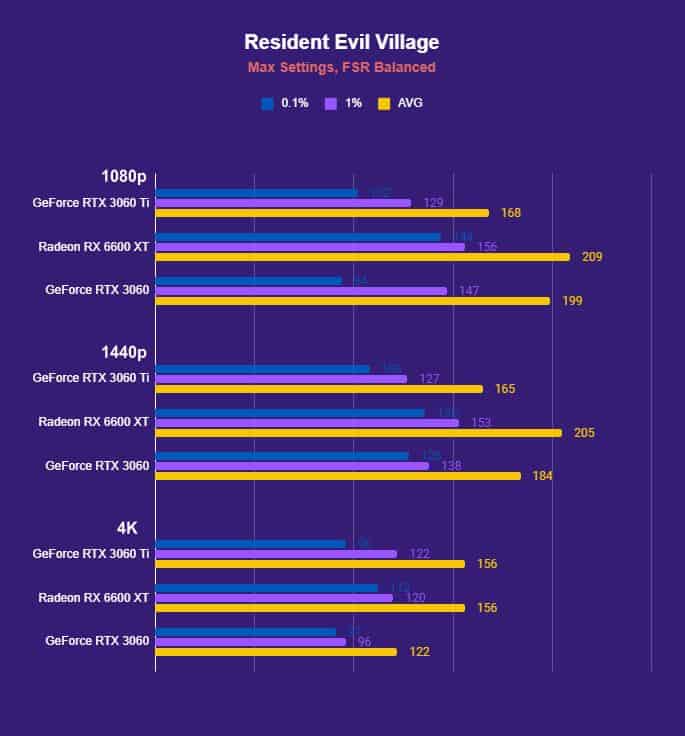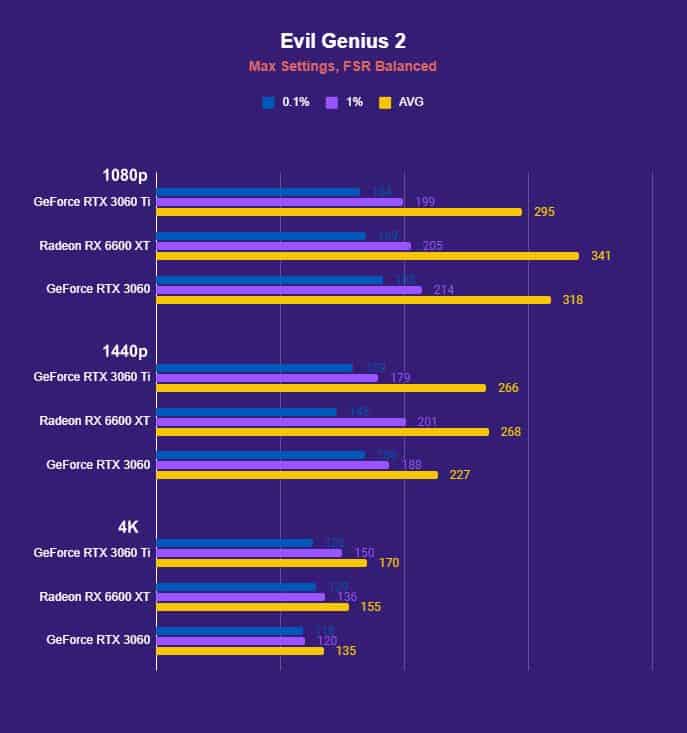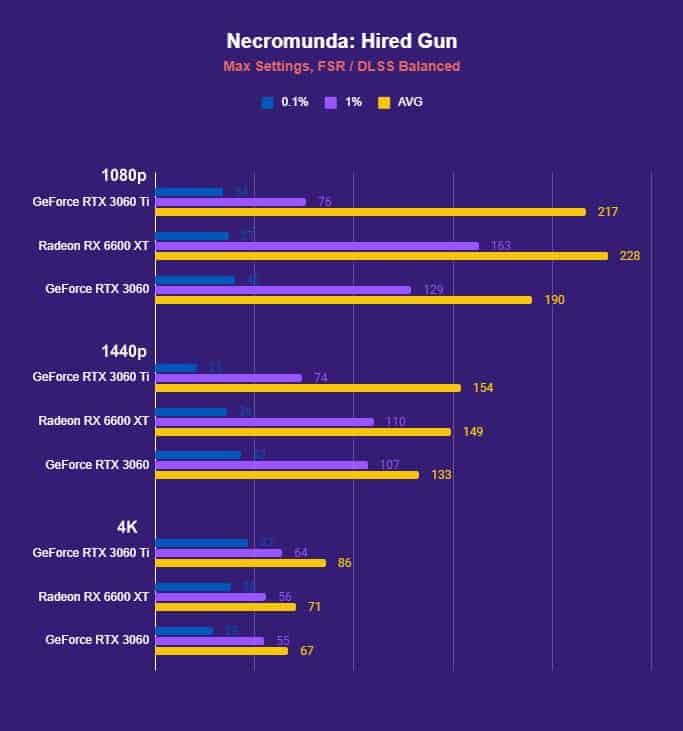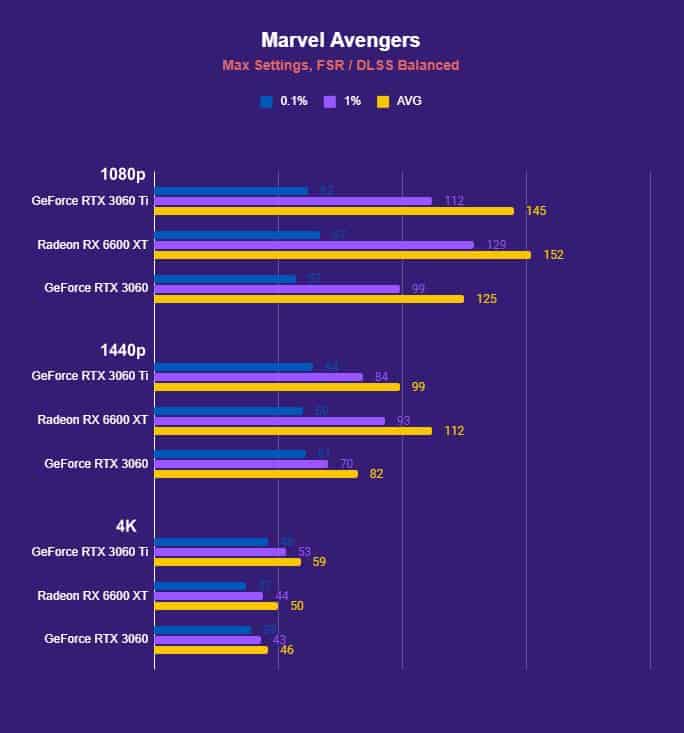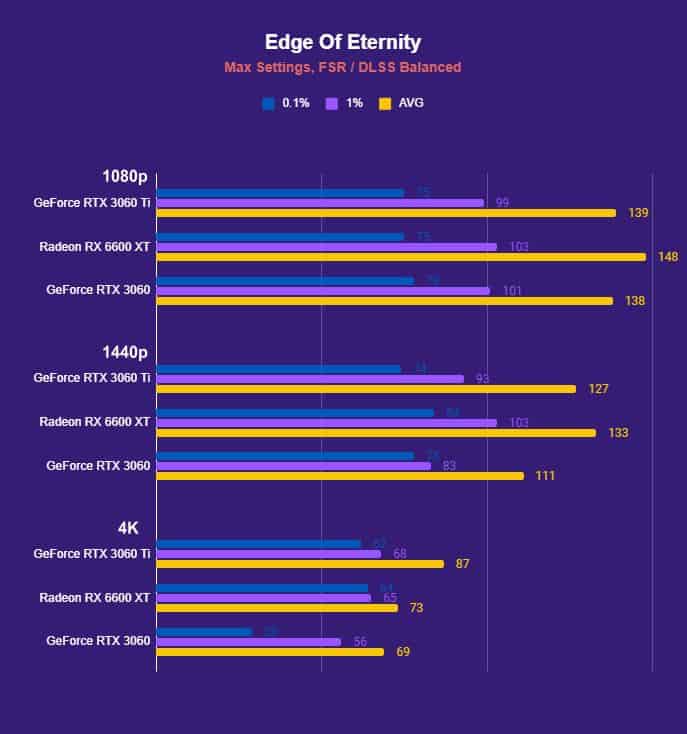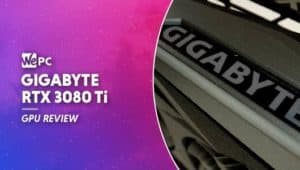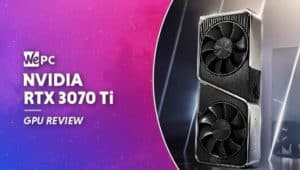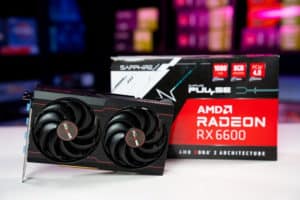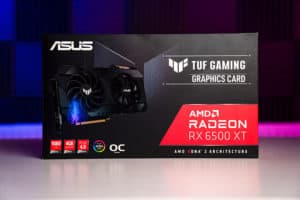ASRock Radeon RX 6600 XT Review
We Review And Benchmark The ASRock Radeon RX 6600 XT Phantom Gaming OC
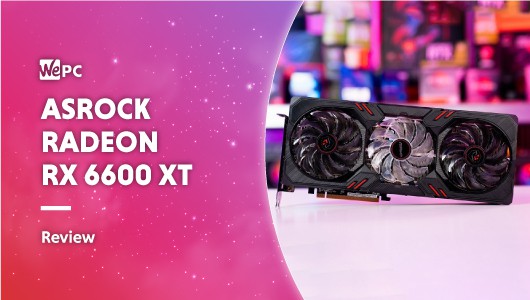
This AMD Radeon RX 6600 XT review will go through all the features you need to be aware of when deciding whether or not to buy the new graphics card from the red team. We will be reviewing the specs, price, aesthetics, cooling and most importantly the RX 6600 XT benchmarks in various games to see if it’s worth your money.
AMD are directly trying to take on Nvidia’s RTX 3060 with their RX 6600 XT graphics card – aiming to win the battle of the mid-range GPU. The red team have made 1080p competitive gaming the big focus of their marketing for the AMD Radeon RX 6600 XT, and claimed in their Radeon RX 6600 XT reveal, based on their own benchmarks, that the graphics card performs around 15% better in FPS terms than the Nvidia RTX 3060 at 1080p in a host of games (though only matching it in a couple).
The MSRP of the RX 6600 XT is $380, which is 15.5% higher than the $329 of the Nvidia RTX 3060. This would suggest a proportionate price per performance increase if AMD’s claims are to be believed, though the AMD card will not come with the same Ray Tracing and DLSS support as the RTX 3060 (though AMD’s FSR will feature). It was originally believed that the card would come with a cheaper retail price than the RTX 3060, but it seems AMD are banking on the fact that the real market prices of graphics cards are currently so high that an increase in MSRP is justified – as consumers will be lucky to find an RTX 3060 for anything close to MSRP. If AMD’s graphics cards turn out to be more available than their competitors, it may be this gamble will pay off.
Read below to see if AMD’s performance claims were borne out in our independent benchmarking!
Which Radeon RX 6600 XT AIB Is Best?
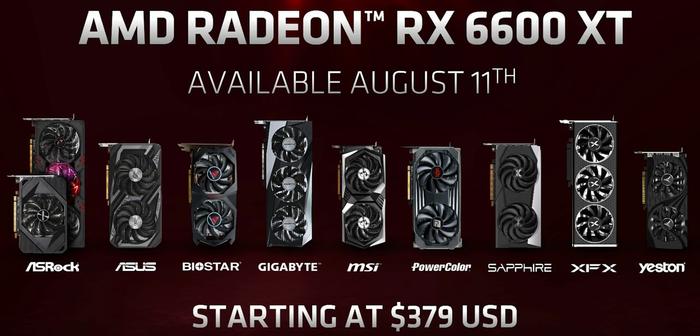
For this particular graphics card, AMD are not selling any Founder’s Edition versions of the GPU (a.k.a the ‘reference version’ i.e. the vanilla, own-brand AMD Radeon RX 6600 XT) – all graphics cards will be branded as AIBs / partner models, and many of these (though not all – some will come later) will be available on launch.
The original reference versions of the graphics card will be available to OEM producers who will be incorporating them into their builds, but they will not be sold separately.
The version of the GPU we will be reviewing today is the ASRock Radeon RX 6600 XT Phantom Gaming OC, which comes with boosted GPU speed (the OC standing for overclocked) and an expanded 3 fans cooling system to compensate, as well as various other modifications and enhancements made by ASRock to the base model which we will discuss. If you want to know which Radeon RX 6600 XT is the best one for you then keep checking back on WePC for our upcoming Best RX 6600 XT Graphics Card guide.
ASRock Radeon RX 6600 XT Phantom Gaming OC Specifications And Price
Like the reference version of the card, the ASRock Radeon RX 6600 XT Phantom Gaming OC has 8GB of VRAM, which is 4GB less than the rival RTX 3060. The 128-bit memory bus is also smaller than the 192-bit RTX 3060, however, the memory clock is faster in this particular version at least: coming in at 2000 MHz compared to the 1875 MHz of the RTX 3060 Founders Edition.
The compute units/stream processors for this AIB and the reference version is 2048 (this spec will be consistent across all third-party versions of the GPU – otherwise you’d essentially have a completely different graphics card!). As you’d expect, the main change that ASRock have brought to their overclocked variant of the card is the increased core clock speed: a 2607 MHz Boost Clock, compared to the 2359 MHz of the reference model – a significant increase.
Higher clock speeds mean a greater requirement for cooling, which we will discuss in more detail below. The main obvious difference in this area though is that the Phantom Gaming OC has three fans rather than two, which also makes the card substantially longer than the Founder’s Edition / reference model.
Thankfully the TDP of this ASRock RX 600 XT AIB and system power it requires remains the same as the reference model, and a 500W PSU will do the job for both.
Could The Navi 23 Die Mean More Supply Of The AMD Radeon RX 6600 XT?
The RX 6600 XT uses a new Navi 23 die, which is smaller than the preceding Navi 21 used in most other RDNA 2 Radeon graphics cards. In essence, this should mean that less silicone is needed and therefore (we hope!) AMD will be able to make more of these GPUs, which may give them an edge over Nvidia’s RTX 3060 which continues to be very difficult to get hold of.
ASRock Radeon RX 6600 XT Aesthetics
The most obvious visual difference with this particular AIB compared to the reference version of the Radeon RX 6600 XT is the length and the number of fans. The ASRock Radeon RX 6600 XT Phantom Gaming OC comes with three fans – the middle one being translucent with internal ‘Polychrome SYNC’ LED ARGB lighting that looks pretty snazzy when lit up, with the two outer fans being a darker color. At 303mm this ASRock Radeon is a long boy, though at 45mm deep it’s not too thick, and only takes up 2.25 PCIe slots on your motherboard.
The overall aesthetic ASRock have gone with is a sort of sci-fi military, brushed aluminum look, with the occasional red accent (just to make sure everyone knows it’s an AMD card). Besides the central fan, the Phantom Gaming logo also lights up and can be controlled via the relevant software.
The metal backplate feels sturdy and repeats the red and brushed aluminum look, with a stylish-looking cutout segment on one end to permit greater airflow.
All told, this is a well made, nice-looking graphics card, particularly when the RGB lighting in the central fan is turned on, and the only situations where we’d advise you to consider a different RGB would be if you’re going with a white PC build or something similarly light-colored, or if you need a shorter length RX 6600 XT.
ASRock Radeon RX 6600 XT Cooling
One of the most impressive aspects of AMD’s RDNA 2 technology is their comparative energy efficiency over previous generations. The ASRock Radeon RX 6600 XT Phantom Gaming OC has the same, fairly low TDP as the reference version of the card; that is 160W (compared to the 170W of the RTX 3060 and the 200W of the RTX 3060 Ti). As mentioned, it only requires a 500W PSU to run and only requires 1x 8-pin power connector. All this is indicative of the relatively low heat output of the RX 6600 XT.
This particular RX 6600 XT comes with a Phantom Gaming 3x cooling system, that utilizes the aforementioned 3-fan design and also enhancements to the heatsink base and a consolidated heatpipe design to maximize conductivity and heat dissipation. When combined with the natural advantages of the RDNA 2 architecture, this is a card which runs cool even with its factory overclock and also (despite the 3 fans) fairly quiet. There is certainly headroom in this design for further GPU overclocking, should you want to.
ASRock Radeon RX 6600 XT Performance Benchmarks
All of our benchmarking tests were ran at the maximum possible settings for each game at 1080p, 1440p and 4K. For the purpose of this review, we will not be looking at performance with Ray Tracing switched on. If Ray Tracing is an important feature for you when looking for a GPU you should definitely go with an Nvidia card – the AMD version of the technology is substantially inferior to the Nvidia cards. If you do still want to get a look at how the RX 6600 XT performs with Ray Tracing switched on, our in-depth benchmarking video (see below) will showcase this feature.
The CPU we paired with each of the above graphics cards was the AMD Ryzen 5 5600X and Smart Access Memory was turned on in all of our tests. It should be noted that this gives the RX 6600 XT a slight advantage over the Nvidia GPUs as it is able to use Smart Access Memory technology to increase performance in certain games (though not others) by a few percent; indeed, AMD claimed to have made additional improvements to the RX 6600 XT and how it interacts with the resizable bar, which should further improve the FPS boost Smart Access Memory brings. If you have an Intel CPU then this will not be a benefit you will enjoy.
AMD Radeon RX 6600 XT vs Nvidia GeForce RTX 3060
In every game we tested, with the exception of Rainbow Six Siege, our tests showed that the RX 6600 XT comfortably beat the RTX 3060 in every game, at 1080p and 1440p resolution, even occasionally coming ahead at 4K. In some games like Resident Evil 6 and Edge Of Eternity we saw only around a 5%-7% Average FPS lead for the AMD card at 1080p, but in most of the others there was around a 20% increase, COD Warzone actually showing a 24% improvement. Even at 1440p most games performed better with the Radeon RX 6600 XT by between 10%-20%, with a couple of exceptions. Based on these results we can clearly see that in raw FPS terms AMD’s claims have been borne out (at least if you’ve got an AMD CPU with Smart Access Memory capability).
RX 6600 XT AMD FSR vs DLSS RTX 3060 Ti
Previously one of the advantages Nvidia graphics cards had over AMD’s was DLSS technology. Although this is still the case, AMD’s FSR technology has closed the gap in the area of upscaling performance significantly. Necromunda: Hired Gun, Edge Of Eternity, and Marvel’s Avengers are (at the time of writing) the only three games which support both AMD FSR and DLSS technology, so we wanted to see how each GPU performed in these scenarios, using the best upscaling technology available to them (the RX 6600 XT with AMD FSR enabled, the RTX 3060 and RTX 3060 Ti with DLSS). For these tests, we chose to go with the ‘balanced’ setting for both technologies, though you can see how both cards performed on the other settings in our benchmarking video.
We’ve already seen that the RX 6600 XT beat the RTX 3060, so let’s look at how it fared against the 3060 Ti:
- At 1080p in these three games, the RX 6600 XT pulled ahead in terms of average, 1% and 0.1% FPS. Necromunda Hired Gun and Marvel’s Avengers both saw a 5% increase, with Edge of Eternity pulling ahead by 6%.
- At 1440p it was a mixed bag – with the RTX 3060 Ti outperforming in Necromunda: Hired Gun by 4%, but being beaten by the RX 6600 XT by a whopping 13% in Marvel’s Avengers, which also inched ahead slightly by 4% in Edge Of Eternity.
- At 4K the Nvidia RTX 3060 Ti comfortably beat the RX 6600 XT in all three games.
AMD Radeon RX 6600 XT vs Nvidia GeForce RTX 3060 Ti With No FSR Or DLSS
The above results were replicated almost entirely across the board for the games we tested without FSR or DLSS enabled, the one major exception being Rainbow Six Siege, in which the Radeon RX 6600 XT was soundly trounced by the 3060 Ti as it had been by the RTX 3060.
The surprising thing about these results is not only that the RX 6600 XT beats the RTX 3060 in most games at 1440p as well as 1080p, but that it also frequently bests the RTX 3060 Ti at both these resolutions.
Final Word
So what is the conclusion of our Radeon RX 6600 XT review? Well, as far as the specific AIB we tested, the ASRock Radeon RX 6600 XT Phantom Gaming OC, we are pretty impressed with this graphics card. Not only did the RX 6600 XT beat the RTX 3060 at 1080p across all but one game we tested it on, broadly backing up the 15% FPS uplift claimed by AMD, it also outperformed at 1440p. This you would expect for a card whose MSRP is 15.5% more, but the card also managed to beat the 3060 Ti at 1080p the majority of the time (which at $399 has a 5% higher MSRP), and overall pretty much matched it at 1440p (sometimes beating it, sometimes losing, sometimes drawing even).
At 4K resolution, the RX 6600 XT did not perform so impressively, which considering its 4GB less VRAM is not surprising, but this is not what this AMD card is designed for, and we wouldn’t even recommend the RTX 3060 Ti for this resolution (an RTX 3080 or 6900XT is what we’d suggest if you want good FPS performance on high graphics).
Is The AMD Radeon RX 6600 XT Worth It?
If you are interested in 1080p gaming and don’t care much about Ray Tracing, then we would say the AMD Radeon RX 6600 XT is definitely worth it, and we would recommend it over both the Nvidia RTX 3060 and the RTX 3060 Ti.
Similarly for 1440p gaming, the RX 6600 XT is superior to the RTX 3060, and we would even say it’s worth considering compared to the RTX 3060 Ti at this resolution – ultimately the deciding factor here will be which one you can find in stock and at what price, if you can get hold of an RX 6600 XT at anything close to MSRP (which is very unlikely for the RTX 3060 Ti in today’s market) then we would definitely suggest you grab one.
If you’re after Ray Tracing performance, then Nvidia graphics cards are still the way to go, and either the RTX 3060 or the RTX 3060 Ti would be good choices, depending on your budget, and, more crucially, which one you can actually get hold of at a price close to MSRP.
All told though, the AMD Radeon RX 6600 XT is a great graphics card for most builds – make sure you check out our Where To Buy AMD Radeon RX 6600 XT page to ensure you get one whilst stocks last!
Disagree with our conclusion or have something you’d like to know that we haven’t covered? Please leave us a comment below and let us know your thoughts.

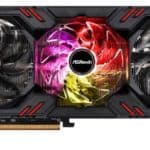
WePC is reader-supported. When you buy through links on our site, we may earn an affiliate commission. Prices subject to change. Learn more

